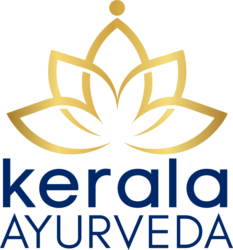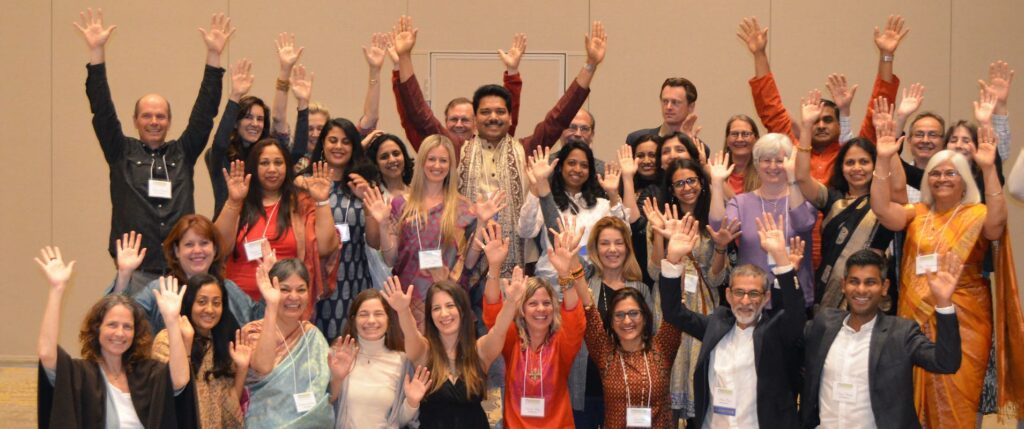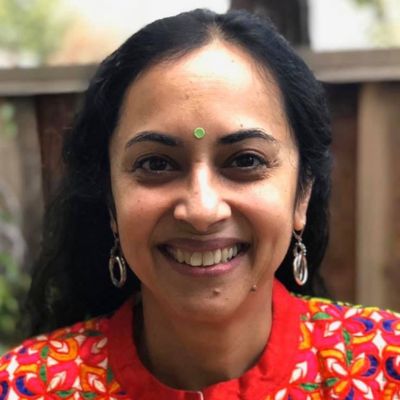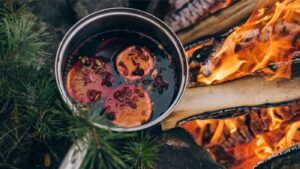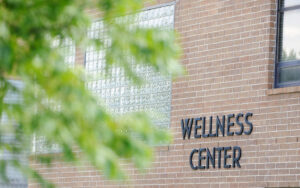The National Ayurvedic Medical Association (NAMA) is the largest organization setting educational standards for Ayurveda in the U.S. Kerala Ayurveda USA’s CEO and Academy Director, Vaidya. Jayarajan Kodikannath has been an active member of NAMA’s organization working towards the mission of preserving and protecting the Ayurvedic traditions, advancing its reach and supporting the growth of the procession. We sat down with Vaidya. Jayarajan in spring of 2022 and again this spring of 2023 to learn more about his dual role serving our Academy and NAMA.
What’s the most important aspect of Ayurveda to impart to students and professionals?
Every being including plants has three layers, physical, subtle, and causal. There is the physical aspect of the Dhatus and malas in the human body; the subtle or energetic plane; mind, Gunas (Sattva, Rajas, Tamas) and Doshas (Vata, Pitta, Kapha) and finally the life force, consciousness or Atma. Ayurveda is a science that harnesses the three-layer aspect of healing. It supports the whole self completely; healing is not just material or energetic but at all levels. This is how I got involved in the subtle and conscious aspect of Chikitsa in learning from the village Vaidyas or from my lineage.
I learned to harvest herbs in the traditional way, taking into account the time, direction, how to cut, and to be happy while harvesting them. The subtle and conscious aspect is attended to in the whole process. We need to have an intention; whenever we do anything; assessment, giving, or mixing an herb, or performing a Panchakarma, we need to be in the space representing Ayurveda. We are not individuals; we are part of the whole system. We need to have only the Rogi in our hearts while practicing.
That is the greatest learning according to me; more than anatomy, physiology, microbiology, and even Samhitas.
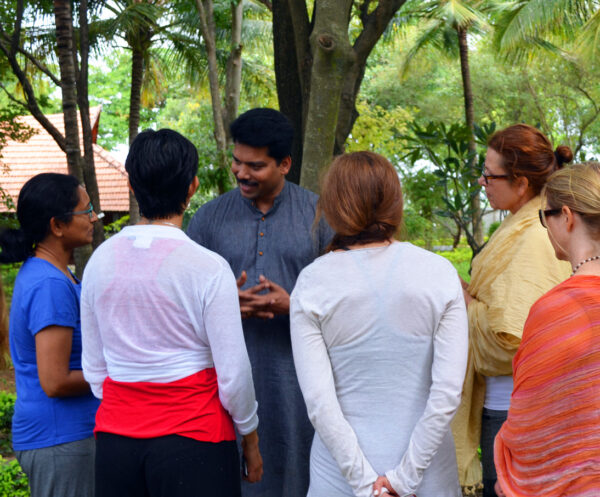
What are you able to uniquely offer Ayurveda in the West?
I was so fortunate to grow up in Kerala and be in nature either in school or out even as a kid; in the rice fields or natural space, touching and living with and understanding plants is one of my passionate areas. That has been a blessing. Upholding that aspect of Ayurveda is what we need to encourage; to reconnect with nature.
Kerala is such a diversified piece of land on earth – in the small piece of land, diversified climatic conditions are there. There is a rainforest area, a serene lake area, and an unparalleled variety of plants growing there. Western Ghats are on the eastern side and the Arabian Sea is on the western side. That made the Kerala tradition of Ayurveda more plant-based. In the north, there is a more herbo-mineral approach because of the scarcity of herbs. There are many families in Kerala that have followed the lineage and tradition of Ayurveda for so many generations. I could track five generations in my lineage. There is authenticity and total alignment to the Ayurvedic system in whatever we do; teaching, practicing, or providing tools to the Ayurvedic professionals to support the community.
As CEO, what is your vision for Kerala Ayurveda Academy?
Kerala Ayurveda began as a premier institution for traditional Ayurvedic education in the US. In 2021, that changed. We are expanding and the goal is to be the premier institution for authentic Ayurvedic education, globally. As part of that, we launched our first program in Europe and have plans to launch in South America, Canada, and other geographies.
Our specialty is advanced professional education. I feel it’s my Dharma to focus on the core clinical aspects of Ayurveda, training Ayurvedic professionals to become capable and confident, whether it be in clinical internships, case studies, formulation-making workshops, or Ayurvedic assessment. As a teacher, I always look for feedback. The Academy is for students. That is the reason for creating more programs and rearranging them, which has really been working.
Kerala Ayurveda has been around for 77 years; we manufacture 350 herbal formulations in India. I started bringing formulations to the U.S. and there are now 180 here. I feel the universe has supported me and I am so happy to provide authentic tools to my graduates and the whole community of Ayurveda with trusted purity, efficacy, and quality from the Kerala Ayurveda product store.
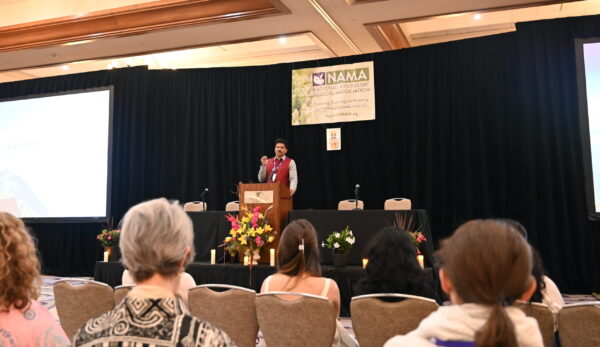
Can you speak more to this global vision in light of the recent pandemics?
The pandemic made it clear that it is time for the entire world to think about the source, nature, and self-care. No antiviral, antibiotic, chemical, or vaccine can shield us completely. If we are able to do self-care in alignment with the principles of nature, even without vaccinations, we will be able to stay strong and minimize the possibility of any imbalance or disorder. Self-care is about the global community; every human being is empowered, encouraged, and educated for self-care in alignment with nature; that is the role of Ayurveda. The beauty is it fits everyone! It’s universal, not just for one location, religion, race, community, or gender. Healing the self, family, communities, and all of nature is the vision for Ayurveda Globally.
Ayurveda is a traditional science, and we keep being asked to justify Ayurveda with scientific research and evidence-based medicine.
Ayurveda is a time-tested system and history itself is its evidence. It has been established and practiced through thousands of years and people have been helped and lives transformed, no evidence is required from that perspective.
Secondly, the format of evidence that the modern world is looking for requires tools and language, which are very limited, to establish holistic life sciences like Ayurveda as an evidence-based system. For example, Vasti in modern language is an enema. But it is not the same. Vasti is the route of therapeutic administration in Ayurveda, while an enema is to clean the colon or rectum. Another example, you may have a placebo double-blind study about how acetaminophen or ibuprofen works; this molecule gets absorbed here; hits this particular thing, and does this. But you can’t compare that to an Ayurvedic herb or formulation; the entire aspect of how it functions is totally different; there is more of a systems approach.
I have been actively involved in the research projects of Kerala Ayurveda and we have been working with a more systematic approach to our work. One of the studies in which I was the inventor and principal investigator was just published and received a U.S. patent for a uniquely prepared herbal formulation with established efficacy for metabolic syndrome disorders such as type 2 diabetes, mellitus, obesity, and lipid profile management. As well as the use of this herbal composition in the preparation of food supplements, pharmaceuticals, and nutraceuticals in suitable dosage forms. This work is done for establishing the credibility of the ancient holistic science of Ayurveda through most modern research methodologies. The formulation has been extensively studied through the rigors of modern scientific validation through Phytochemical and Marker Analysis, extensive pre-clinical at Renovel Discoveries Inc. in the United States, and pharma rigor double-blind placebo-controlled clinical study at the well-known Banaras Hindu University (BHU) in India.
How did your involvement start with NAMA?
Vaidya. Jayarajan has served as President of NAMA since November 2021.
I had a mentality that I’m from an Ayurvedic family, for the world, for every organization, and for everyone in Ayurveda, and therefore decided not to get involved with any one group. One of my students asked me to join NAMA leadership. When I mentioned my approach, she said her take was different. She said “Ayurveda is in a pioneering stage and the decisions taken by organizations like NAMA are so crucial for the future and evolution of Ayurveda. Rather than people like you looking from the outside, you should be a part of the decision-making. NAMA is the largest and oldest national association.” I reviewed all the organizations, and her words touched me. That’s why I joined the organization. I started with the standards committee to set standards for all levels of education and practice. In 2013, I joined the NAMA Board formally and am now the President. It has been an incredible journey.
Kerala Ayurveda has always been involved with NAMA, and our programs have always been recognized by NAMA. We’ve sponsored every NAMA conference and have taken steps to register all our programs. NAMA just upgraded its in-person requirement and we have worked very hard to meet those standards.
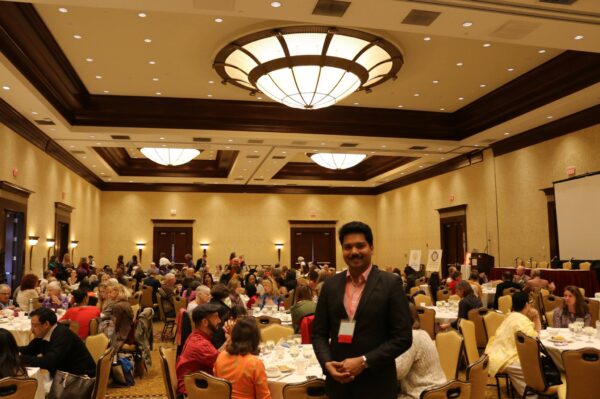
Is there any conflict of interest in your role as Kerala Ayurveda CEO and NAMA President?
That’s a very good question. Who is NAMA and who is a part of NAMA, it is the ecosystem of NAMA; whether it is a Director or Board or Committee member; we consist of professionals, practitioners, educational institutions, wellness center owners, and product business owners; I am also a part of the ecosystem. I’m very clear that my NAMA hat and conversations are regarding NAMA. If my team members ask me about NAMA, I tell them I’m here as your boss and not a NAMA representative here at work. I ask them to formally communicate with NAMA and they will get a formal response. I have no conflict of interest; as a professional, my Kerala Ayurveda hat and NAMA hat are kept intact, and I don’t take them to each other’s meetings; it’s part of my policy.
Can you explain why the national board exam was instituted?
Taking Ayurveda down the path of natural healthcare sciences to licensure and making it a part of the normal stream of healthcare, is the goal in the U.S. This will allow our professionals to practice legally and at par with all other healthcare professionals. Our community is very small. The numbers matter and membership is important. Ayurveda is in a self-governing board position because there is no legislative body to regulate Ayurveda, so we must set standards and ethics for ourselves. The national board exam is for us because if we express ourselves as a credible profession, without the regulatory authorities asking us, we are at par with comparable health professions. That will make it easier for us to get licensed because we are self-regulated. The most important step every Ayurvedic professional can take is to add credibility to themselves and their profession by becoming NAMA board certified.
Why should schools join NAMA and have their courses approved/accredited? Are fewer schools part of NAMA today?
We must make standards for Ayurvedic education to grow. The efficiency of a profession depends on the standards of education both theoretical and practical.
We had to upgrade standards. Now certain schools may not have the resources or the model to comply with those standards at this time. NAMA has been very mindful of that. Whatever the new standards, NAMA has given 18 months for schools to implement them.
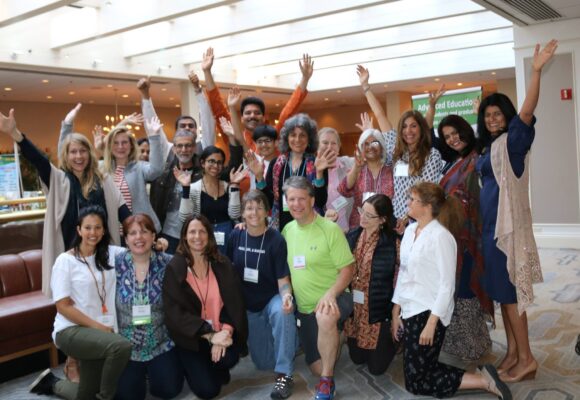
Do you recommend students align with NAMA or local state organizations?
I strongly encourage every Ayurveda student to be part of both national and state organizations. State organizations support NAMA and NAMA supports them. NAMA has a synergy with so many local organizations. This is a part of the Ayurvedic ecosystem of organizations. The local needs and the way it is practiced are different, what I can do in terms of consultation in California isn’t what I can do in Washington. Licensure is a state-focused process. A state organization mobilizes practitioners and students and knows the local needs.
NAMA wants to inspire and support the creation of state organizations in every state. NAMA is ready to provide NAMA standards as state standards and our continued education credit is their education credit. It is more of a family supporting each other.
There have been a lot of big changes within the NAMA organization lately. Could you explain what these changes are?
Change is an inevitable aspect of growth and evolution. It is like how the layers of the bark of trees open to accommodate their growth into a huge tree. To accommodate the needs of the growing profession of Ayurveda in the USA and to facilitate further advancement of this profession every institution and organization in the field of Ayurveda will have to reset and upgrade its systems and processes. As a part of such a reset, the National Ayurvedic Medical Association has just brought in Lucia Gutierrez as the new Executive Director and a professional administrative team through an association management company. They have launched a new membership portal to enhance its effectiveness to serve the membership and to ensure further progress of the organization.
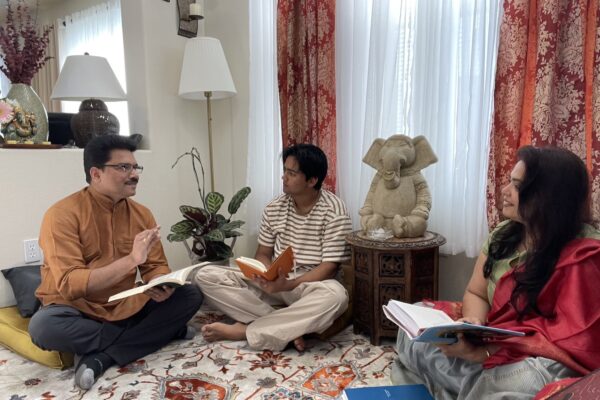
Some schools that are not part of NAMA consider Ayurveda to be Hindu with ‘Vedic’ mantra chanting. How do you respond to this?
That is a good question; religions and belief systems clash sometimes. When we look through a narrow perspective that is a problem. But, if we look through a universal, true Ayurvedic perspective, you are free to believe in whatever you want; it is a consciousness-based universal science. If you go to an Ayurvedic Institution, Hinduism is a culture that is beyond religion; it is based on inclusivity with India as a secular country that has nurtured all religions and everyone who came there. If we chant in class, we set an intention for healing. Ayurveda is a universal healing science and does not clash with any other system.
What are your thoughts on Ayurveda as competition with other forms of medicine, and concerns about liability?
Ayurveda is not merely a form of medicine; it is a life science. If healing is a transformation of the individual, it involves guiding and empowering Rogis, providing space, because eventually they are their own healers and enhancing their quality of life. If you take it from the perspective of being just a medical science, that is the problem; it is a holistic life science. We merely provide the right support and tools going beyond the material, where are the concerns of competition with other forms of medicine and liability there? I can practice authentic forms of Ayurvedic medicine here. I can take the Rogi through the entire process and journey; this is the nature of globalization.
You always say Ayurveda is an ocean, and the learning never ends. What are you studying?
If I look at my life I’m one of the most blessed people on earth. An opportunity to be born in a family of Vedic practices and ability to learn the principles of Ayurveda, the herbs and the Vedic rituals is a clear expression of how blessed I am. It is more fulfilling for me to see that this blessing is getting extended to the next generation through me as both my wife and son are my students and pursuing their professional Ayurvedic studies. Sunitha is currently doing her Ayurvedic Doctor program and Arjun is in the Ayurvedic Practitioner program. Chanting two pages of Ashtanga Hridayam was a part of our daily evening prayers and that regular practice was initiated after a ritual of ‘Vidyarambha’ (initiation of formal education) when I was three years of age.
Of course I love the whole Vedic tradition. I am an ardent student and currently I am delving deeper into Jyotisha (Vedic Astrology). It has been a part of my overall Ayurvedic training, but of course it’s an ocean. It is amazing to see the interconnection between the applied Vedic sciences Ayurveda, Yoga, Jyotisha, Vastu, etc. Vedic Medical Astrology is an aspect of Jyotisha every Ayurveda professional should get oriented to understand the predispositions, prognosis and resources for healing available to the individual. I have started incorporating it into my practice to assist with chronic and complex cases. Through Jyotish we can understand the individual’s journey, better see their true nature, and what resources are available. For example, if one of their stronger houses at a given time involves their family, to draw upon that strength.
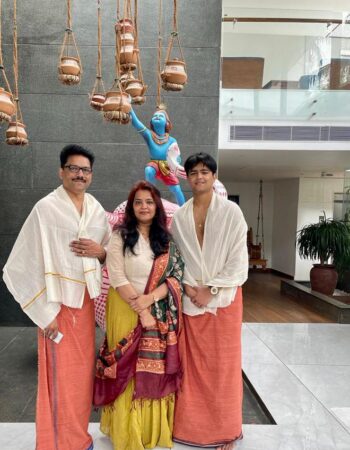
If you could share a message for the Ayurvedic community, what would that be?
The theme of Ayurveda is unification, universal health, and harmony. Nature has a cyclical flow of time mentioned as Yugas; this is the Kalki Yuga, a time of disturbance and fighting but this is when the Ancient Science of Ayurveda provides an anchor for unification going beyond divisions of language, race, religion, and gender, ethnicity, and creed. We believe in Vasudhaiva Kutumbakam, the mantra of Ayurveda. We are part of “One World Family”. Human life is finite; only a few years on this earth as a human being; how can we best express ourselves, whether as students, parents, teachers, Ayurvedic professionals, or software engineers; whatever it is; express the best you can with the utmost righteousness, so we have peace of mind and harmony. This is the message of Ayurveda and my message.
We all should see how we can support each other. Anything can be seen in two ways; you identify the problem or appreciate the goodness. What do you want to project? The Ayurvedic approach would be to appreciate goodness and support in balancing negativity and deficiencies. If you’re very clear about that, the world will be beautiful.
Vaidya. Jayarajan was interviewed by Anuradha Gupta, a Content Specialist at Kerala Ayurveda USA, Board Certified Ayurvedic Practitioner and Ayurvedic Doctor in training.
